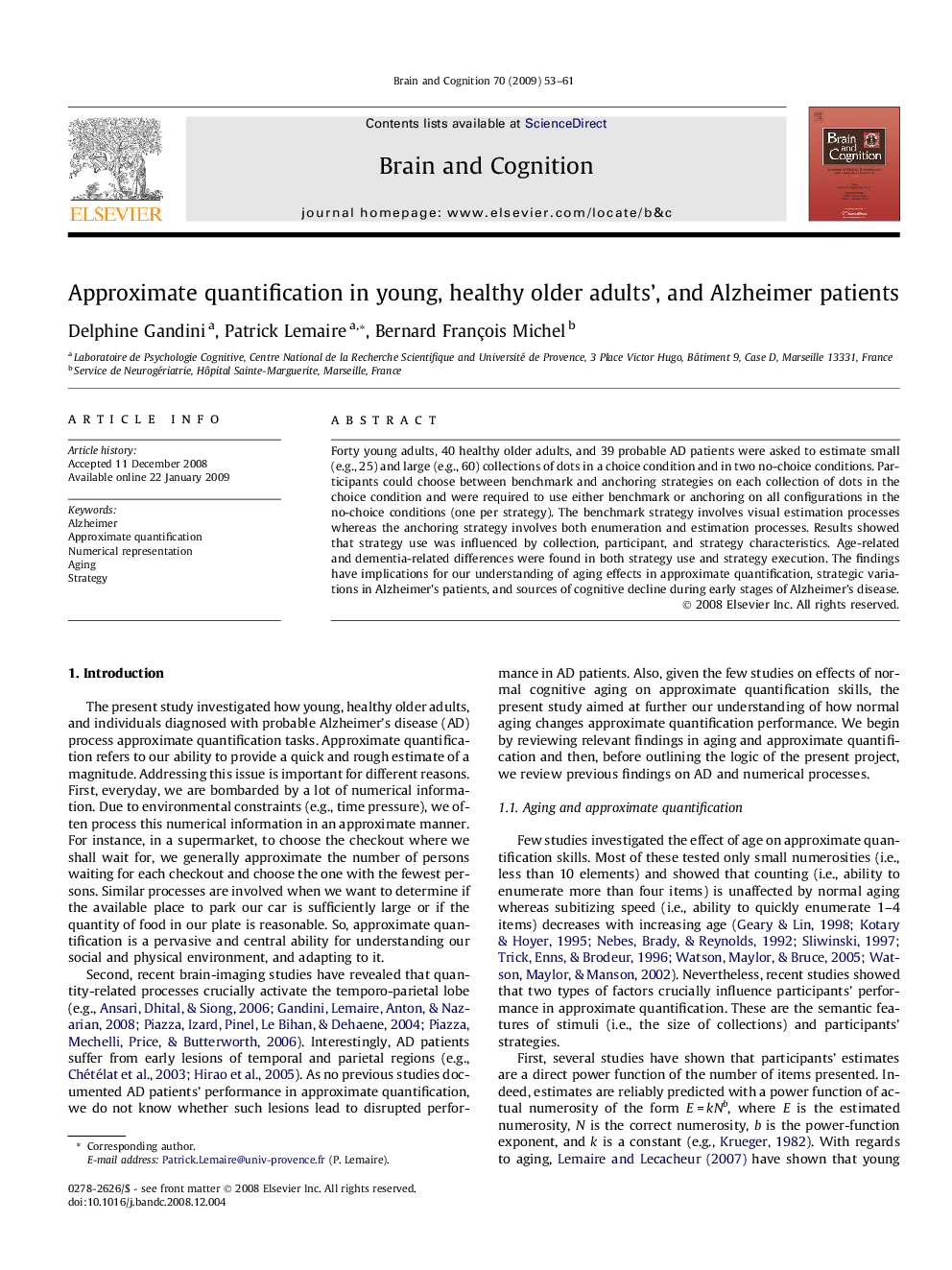| Article ID | Journal | Published Year | Pages | File Type |
|---|---|---|---|---|
| 924907 | Brain and Cognition | 2009 | 9 Pages |
Forty young adults, 40 healthy older adults, and 39 probable AD patients were asked to estimate small (e.g., 25) and large (e.g., 60) collections of dots in a choice condition and in two no-choice conditions. Participants could choose between benchmark and anchoring strategies on each collection of dots in the choice condition and were required to use either benchmark or anchoring on all configurations in the no-choice conditions (one per strategy). The benchmark strategy involves visual estimation processes whereas the anchoring strategy involves both enumeration and estimation processes. Results showed that strategy use was influenced by collection, participant, and strategy characteristics. Age-related and dementia-related differences were found in both strategy use and strategy execution. The findings have implications for our understanding of aging effects in approximate quantification, strategic variations in Alzheimer’s patients, and sources of cognitive decline during early stages of Alzheimer’s disease.
